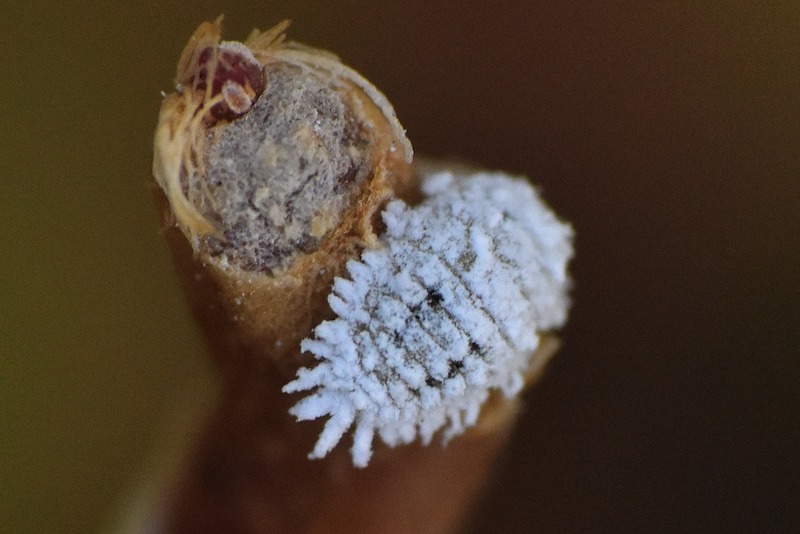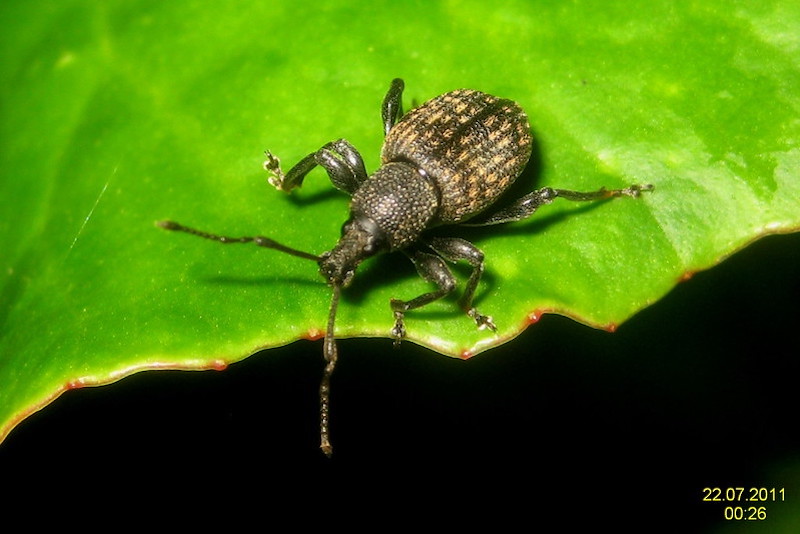Coral Bells or Heuchera are leafy perennials that grow in zones 4 through 9. These adaptable plants can live in different amounts of sunlight and are drought tolerant once established, making them easy to maintain. Pests are one of the few things that can sideline Coral Bells and mar their good looks or possibly even kill the plant. Controlling and preventing infestations are key, especially when dealing with mealybugs, weevils, and foliar nematodes, some of the usual suspects to target Coral Bells.
Common Coral Bells Pests
Mealybugs
Mealybugs are sap-suckers that devastate a plant by sucking the nutrients out. They are tiny white bugs that are hard to see individually but usually form large clusters that are easy to spot. Mealybugs are often found on the underside of leaves or near the base of the plant. Signs of a Mealybug infestation include white, fuzzy egg masses and sticky honeydew waste. Coral Bells damaged by mealybugs will have a wilted appearance and experience leaf drop. The honeydew can attract ants that feed on the waste's sugar and can turn into black sooty mold.

Treating Mealybugs on Coral Bells
If your Coral Bells are infested with mealybugs, acting quickly is essential. Remove damaged foliage or leaves covered in honeydew. Spray the plant with an insecticide, or mix water and dish soap in a spray bottle and spray the plant, covering it in sudsy water. Both treatments will take several applications because you want to ensure you wipe out the eggs, larvae, and mature mealybugs.
Preventing Mealybugs on Coral Bells
There are a few ways to handle Mealybug prevention. Preemptively spray the plant with horticultural oil like neem oil. A proactive approach is best if you have previously dealt with a mealybug infestation. You can also try companion plantings that ward off mealybugs. Plants like thyme, oregano, and garlic discourage mealybugs from coming around. Companion plantings only work if the secondary plants have the same sunlight and care needs as the Coral Bells.
Weevils
Weevils, more specifically black vine weevils or Otiorhynchus sulcatus, are pests that eat Coral Bells. Weevils in the larvae stage eat the roots, and when the adults emerge from the ground, they help themselves to the foliage. Plants that sustain root damage may decline and appear wilted. Irregularly shaped holes in leaves are signs of adult weevil damage.

Photo by David Short, unedited, Flickr, Copyright CC BY 2.0
Treating Weevils on Coral Bells
Weevils cannot fly, so to treat an infested plant, give it a shake to dislodge the insects and knock them to the ground. Spray the plant with an insecticide and focus on the stem or any foliage that comes into contact with the ground since those are the areas the weevils will have to walk through to get back on the plant. Remove damaged foliage to tidy up the look of the Coral Bells and allow the plant to focus on new, healthy growth.
Preventing Weevils on Coral Bells
These pests prefer to lay their eggs in damp soil, so prevent weevils by removing mulch or debris and only watering your Coral Bells when necessary. Treating the ground around the plant with Diatomaceous Earth will kill larvae, and spraying the plant with insecticide or horticultural oil can keep weevils away.
Foliar Nematodes
Foliar Nematodes are tiny worm-like pests that can live on plants or burrow inside the leaves. Infested Coral Bell plants will form yellow spots that later turn brown. Foliar Nematodes are so small they cannot be seen with the naked eye. They do their damage internally, so the dying foliage is often mistaken for a bacterial or fungal infection.
Treating Foliar Nematodes on Coral Bells
Foliar Nematodes are challenging to treat. You can remove and destroy damaged foliage, but typically, removing and destroying the entire plant is the best action.
Preventing Foliar Nematodes on Coral Bells
Prevent future outbreaks of foliar nematodes by removing infested plants. Water the ground around the plant and keep the foliage dry when possible.
Coral Bells Pests Chart
|
Pest |
Identifying |
Treating |
|
Mealybugs |
White, fuzzy egg masses and sticky honeydew waste |
Spray the plant with an insecticide, or mix water and dish soap in a spray bottle |
|
Weevils |
Small beetles with distinctive elongated snouts |
Shake to dislodge the insects and knock them to the ground |
|
Foliar Nematodes |
Tiny worm-like pests, form yellow spots that later turn brown |
Remove and destroy damaged foliage |
Sources:
"Coral Bells Heuchera." The Connecticut Agricultural Experiment Station. portal.ct.gov
"Heuchera (Alumroot, Coral Bells, Heuchera)." North Carolina Extension Gardener Plant Toolbox. plants.ces.ncsu.edu
